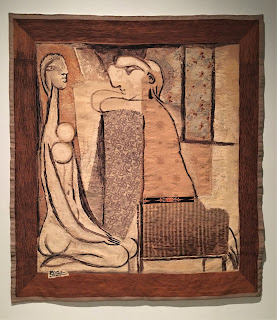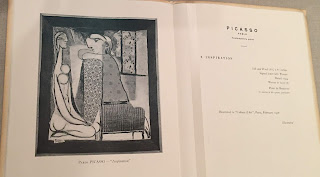This “stay at home” time has dramatically slowed down our
fast pacing rhythm of everyday life and besides following scary news how the
pandemic is taking over more and more not yet red colored spots on world’s map,
forces to think how this could happen. I found thought provoking a view of British
environmental journalist Gaia Vince (
https://wanderinggaia.com/
)who argues that this COVID-19 pandemic is a human creation. This pandemic
spread precisely because of species we are in our biosphere, and because the
planet we created.

We dominate and alter the local and global ecosystem
cumulatively to suit our lifestyles and improve our survival, including habitat
loss for other species, introduction of invasive species, climate change,
industrial-scale hunting, burning, planting, infrastructure replacement, and
countless other modifications. Humans currently threaten 1 million of the
world’s 8 million species. while other species do not naturally cause
extinctions (with rare exceptions). Wild animal and plant products are being
extracted from intact ecosystems at an unprecedented rate. As we plunder these
wild-lands for the resources we value, we disrupt established ecological niches,
including those of pathogen and host. Viruses and bacteria that evolved life
cycles in a wild animal get opportunistic exposure to humans. 75% of the new
diseases affecting us in the past 30 years have animal origins. Communities
adjacent to exploited rain-forests, with their wild animal markets, are the
first affected by novel diseases, such as Ebola, HIV, MERS, SARS, and, most
recently, COVID-19.

Humans now operate as a globalized network of over 7.5
billion hyper-connected individuals: We have effectively become a super-organism
in our interactions with the natural world. However, we are still a part of the
biosphere and as we blunder into ecosystems, we must be mindful of the greater
systems that we are all a part of. A tweak to one part of the network can have
far reaching consequences (good or bad) for us all. COVID-19 has
exposed every type of oppressive/exploitative condition/relation. Every inequity
explodes and festers by the spread of virus. Nothing remains contained as this
catastrophe blasts forward.

Everybody must find a way how to resist, how to overcome
anxiety, fear, hopelessness at times like these. History tells us that needle
arts appeared as responses to collective trauma. In Ireland, during the famine
of the 1840s, philanthropists across the country established crochet schools;
they trained impoverished farming families to make lace for export in
a relief scheme that grew into an art form. During WWII in London,
people sheltering from the blitz were encouraged to pass the time by
knitting.

Numbers of COVID-19 cases grow exponentially. When crocheting
hyperbolic plane, the number of stitches grow exponentially. Everybody who is
participating now in the project to create installation Dreams and Memories has
experienced this exponential growth in very tactile way. Original idea of creating
a meditative piece about our dreams and memories, about past and future
unexpectedly has acquired another dimension – dimension of our social
connectivity and impact on each other lives. Be strong, be healthy! And if
you have an opportunity -- put the memory of a resilience during this pandemic
into some creative piece.
PS - these are pieces put together from what I have now here in Ithaca - thank you all who have submitted! Riga Biennale is currently postponed until further notice giving us more time to reflect, dream, remember, crochet...




















































